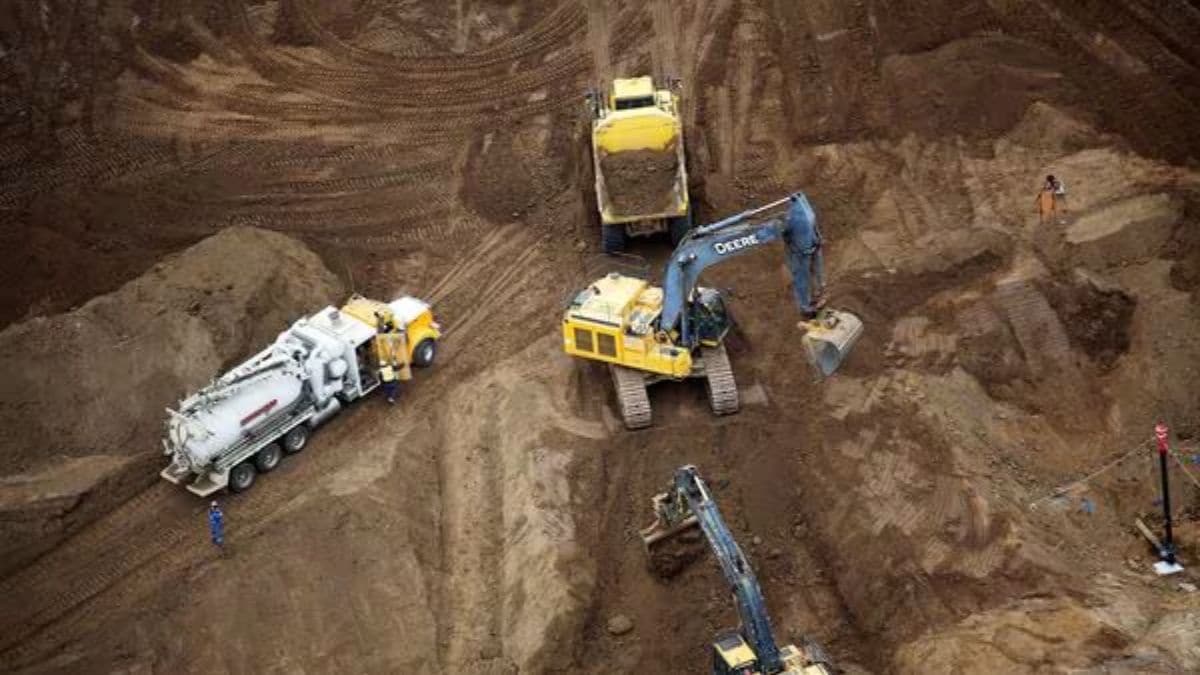

China's increasing imposition of export restrictions on critical minerals is a "wake-up call" for India, signaling a pressing need to reduce its reliance on the East Asian nation. The Global Trade Research Initiative (GTRI) has emphasized the urgency for India to take immediate action through reverse-engineering and localization of key imports to build economic resilience.
Since mid-2023, China has been strategically curbing exports of minerals like gallium, germanium, and graphite, which are essential for India's electronics, defense, and clean energy sectors. These restrictions have disrupted Indian industries' supply chains, with China citing national security reasons for the curbs. Further intensifying the situation, a recent incident involved a Chinese battery giant, CATL, allegedly instructing Foxconn to remove Chinese engineers from a plant near Chennai, which disrupted timelines for India's electronics and EV supply chain development.
India's trade deficit with China has surged to $100 billion in FY25, with imports rising and exports falling. Chinese companies dominate over 80% of India's supply in key sectors like laptops, solar panels, antibiotics, viscose yarn, and lithium-ion batteries. To counter this imbalance, GTRI has recommended establishing sector-specific industrial labs to deconstruct high-volume imports and develop standardized, open-access blueprints for domestic capacity building. GTRI founder Ajay Srivastava suggests launching a nationwide reverse-engineering initiative.
India possesses the world's fifth-largest rare earth reserves and is implementing a comprehensive strategy to develop domestic production capabilities while securing critical supply chains for high-tech manufacturing. The Indian government has launched a seven-year national initiative to strengthen domestic rare earth supplies and reduce import dependency. This includes offering financial incentives to companies establishing rare earth processing facilities and magnet production plants in India, with capital expenditure subsidies and tax benefits for domestic production.
To ensure supply continuity, India is also focusing on strategic stockpiling of critical rare earth materials, diversifying import sources by developing trading relationships with countries like Australia, Vietnam, and Brazil, and investing in recycling technologies to recover rare earth elements from end-of-life products and manufacturing waste.
China's export restrictions on rare earth minerals, particularly those used in EV motors, are expected to create supply chain bottlenecks for India's EV industry. These restrictions target elements like samarium, gadolinium, terbium, dysprosium, lutetium, scandium, and yttrium, which are vital for electric motors, renewable energy systems, and military-grade chipmaking and now require special export licenses from China. Despite having significant rare earth reserves, India relies on Chinese imports due to underdeveloped domestic extraction and processing capabilities.
The Indian embassy in Beijing has engaged with the Chinese government regarding export restrictions on germanium, a critical mineral used in manufacturing semiconductors, fiber optic cables, and solar panels. The Ministry of External Affairs (MEA) has also stated that India remains in touch with Chinese authorities to ensure predictability in the supply chain for trade, consistent with international practices.
To reduce dependence on China and secure access to essential raw materials, India is encouraging its private sector to explore and mine critical minerals overseas, including lithium, cobalt, nickel, and rare earth elements. The National Critical Mineral Mission (NCMM), approved in January 2025 with a planned government outlay of ₹16,300 crore and an additional ₹18,000 crore pledged by public sector units, aims to develop mineral exploration, acquisition, and processing capabilities.
India is also preparing a PLI scheme with an outlay of ₹3,500–5,000 crore to boost local manufacturing of rare earth magnets. Sona Comstar, a major importer of these magnets, plans to produce them domestically. India is actively exploring alternate sources for specialty fertilizers and critical minerals, including deals with countries like Australia, Vietnam, and African nations, and investing in upskilling its labor force and creating engineering talent pipelines to reduce dependency on Chinese technicians.